
Error Guide
Part Three
Part three of the error guide continues where part two left off. This section contains even more interesting and rare mint errors.
Fold-Over Strike
A fold-over strike happens when a planchet doesn't lay flat in the striking chamber and when the dies come together, the pressure of the strike folds the planchet over.
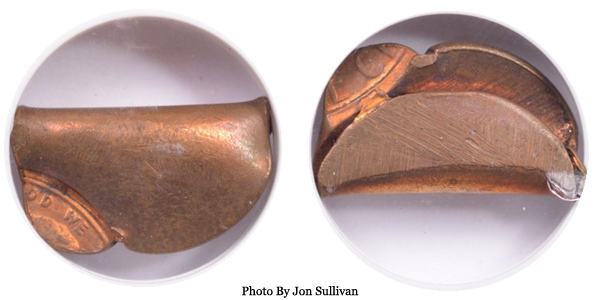
Split Die
This example shows a 1991 Lincoln Cent Split Die Reverse, Clashed Dies, and Partial Collar. The die sunk inwards in a large area of the central reverse design.
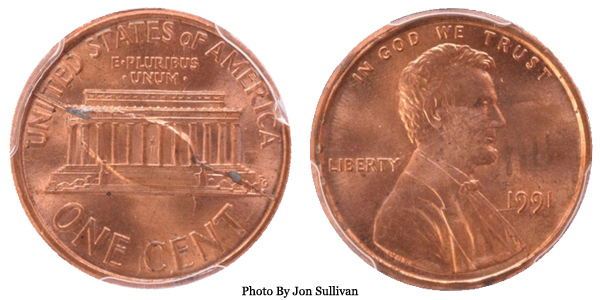
Flip-Over Double-Struck
1964 Lincoln Cent Flip-Over Double-Struck Broadstrike
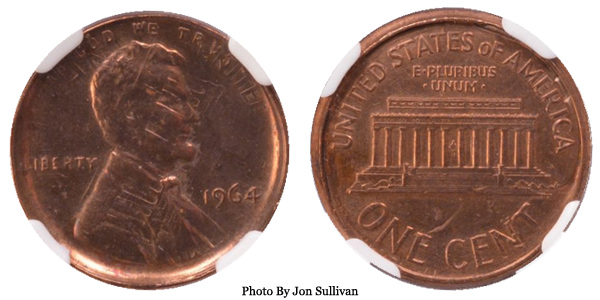
Rotated Double-Strike
1925 Wheat Cent Rotated Double-Strike & Clipped Planchet
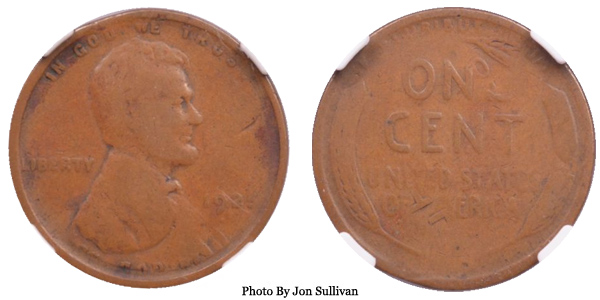
1965 Lincoln Memorial Cent Rotated Double-Strike in collar
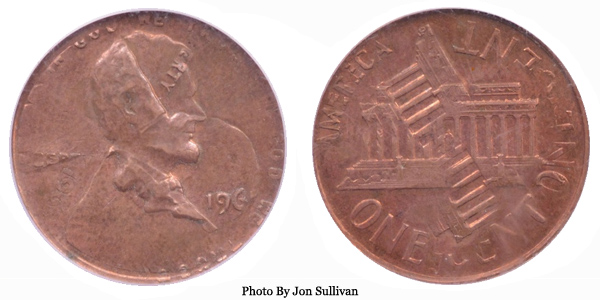
Saddle-Strike
1964 Lincoln Cent Triple Struck Saddle-Strike
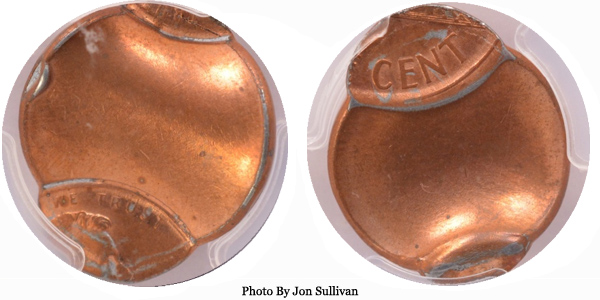
Triple Struck Saddle-Strike
1964 Lincoln Cent Triple Struck Saddle-Strike
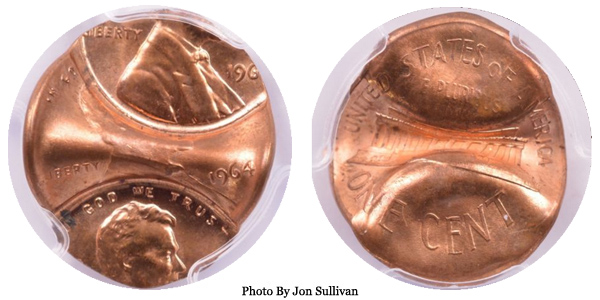
Struck Through Fragment / Brockage
1943 Lincoln Cent Struck Through Fragment / Brockage Mint Error
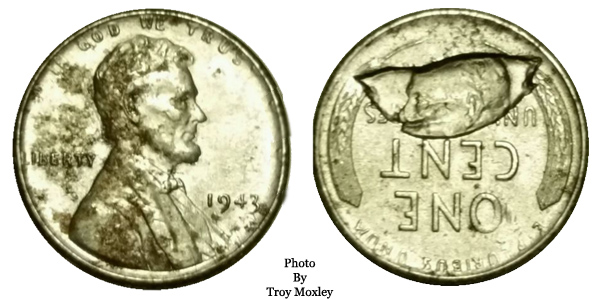
Struck on Damaged Planchet
1964 Cent on Pre-Strike Damaged Cent Planchet
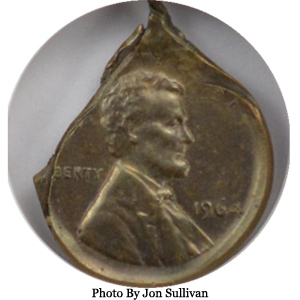
Edge Strike
Edge strikes are rare, on this example you can see the impression of the Lincoln Memorial building on one edge.
Click here to see more photos of this error.
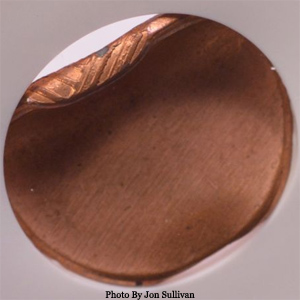
WAVY STEPS
To see more trail dies click here
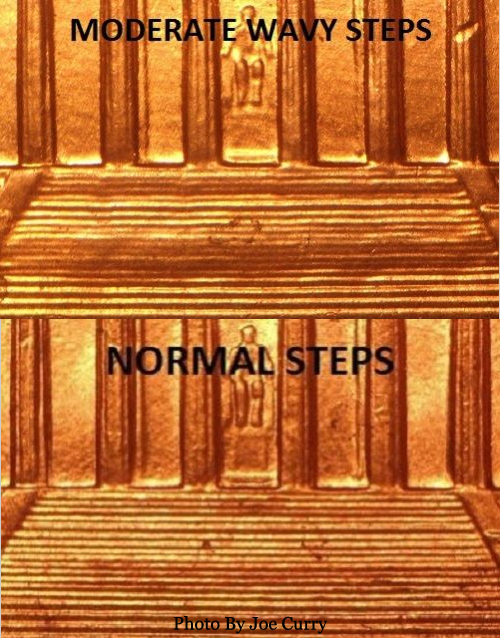
1981 Lincoln Cent 2-Coin Bonded Pair
These coins we're struck into each other several times which caused the metal to "bond" together. A rare type of error very desired by collectors.
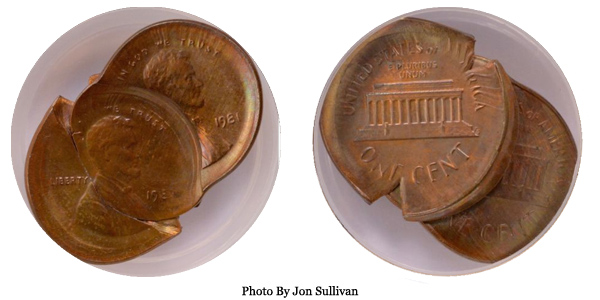
Defective Planchet
1973-D 8% defective planchet at 12 O’Clock
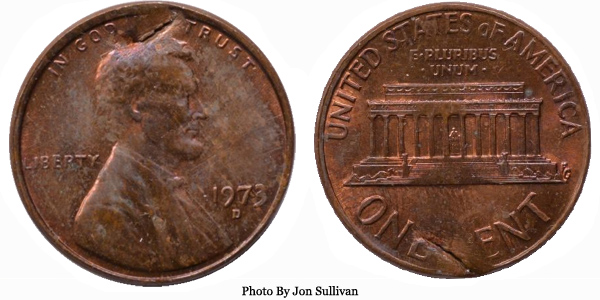
Retained Interior Die Break
To see more images of this error click here
2006 Retained Interior Die Break
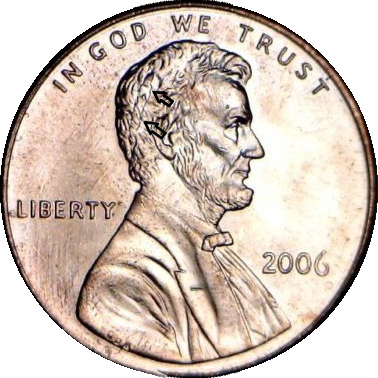
Photo By Denver
Brass Plated Cents
It is not uncommon to find a Zinc cent that has been Brass plated instead of plated with Copper. This can happen when Zinc planchets get left behind in the plating tank and dissolve to combine with the Copper which becomes Brass. Then this solution gets plated onto the next round of Zinc planchets.
Brass plated cents will have more of a yellow color to them verses the normal red color of the Copper plated cents.
Rotated Die
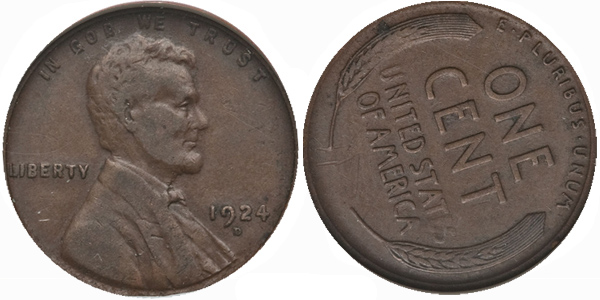
Photo By Heritage Auctions
Wide Collar
A wide collar error occurs when a coin has been struck inside the collar, but has a larger diameter than normal.
This error can be easily overlooked and is usually only caught when trying to fit a coin in a special holder or coin tube. This can happen as a result of the collar becoming worn from over use, accidently bored out too much, or possibly from a wrong collar being used.
Multiple Strike
The image below show a 1918 Lincoln cent that was struck 9 times.
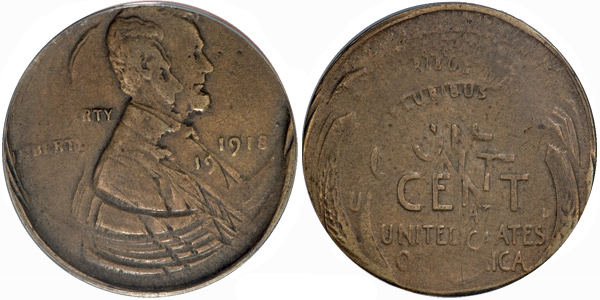
Photo By Heritage Auctions
Die Dent
When a die is damaged by being dropped or struck with a foreign object that leaves an impression on the face, the impression can be transferred to the coins surface during the striking process. This will appear as a raised area on the coin.
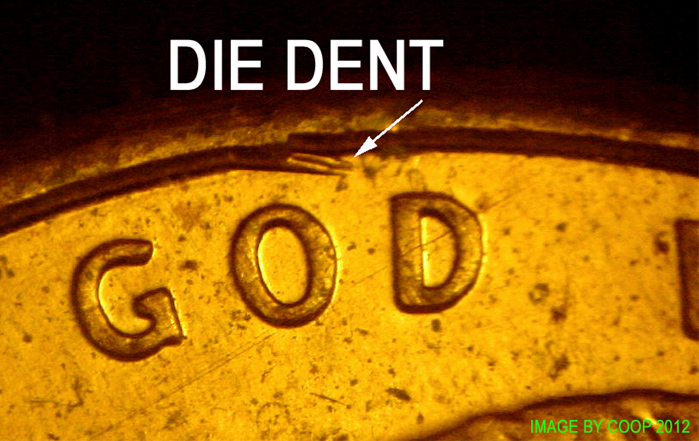
A die dent can be distingushed from a cud by the presents of a complete rim.
Die Dent From Feeder Finger
Vertical lines on the reverse side of Lincoln cents prior to 1959 show a raised line or sometimes two lines caused by a feeder finger scraping the die. All coins minted after the die has been damaged, will show the same lines.
On Lincoln Memorial cents, the lines will not usually run vertcal. When a coin has two lines on it, it can give the illusion that the area between the lines is incuse to the coin's surface.
This 1941-S Lincoln cent shows one light vertical line.
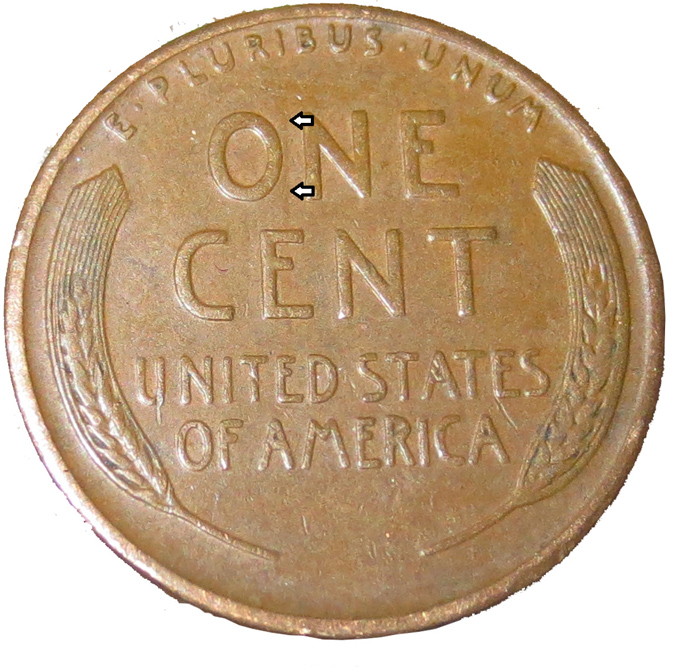
Above Photo By Claude Butcher
This 1940-S Lincoln cent shows two vertical lines.
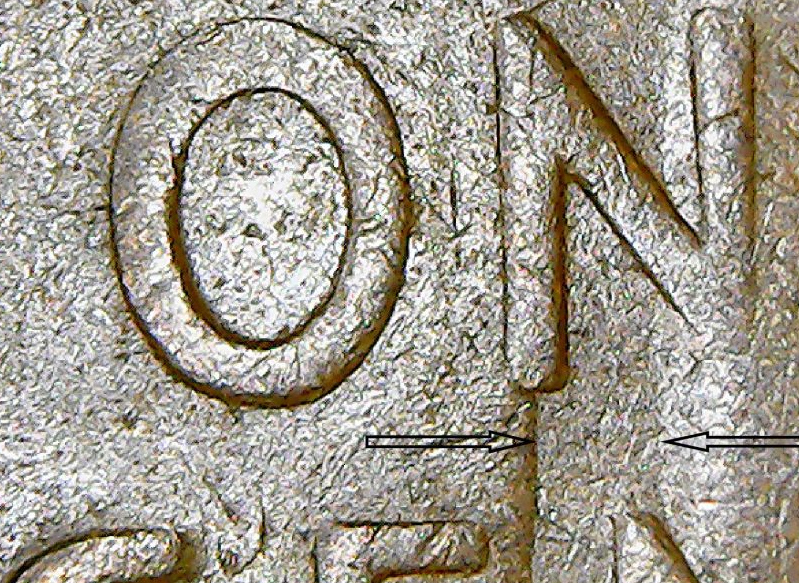
Above Photo By Pete Apple